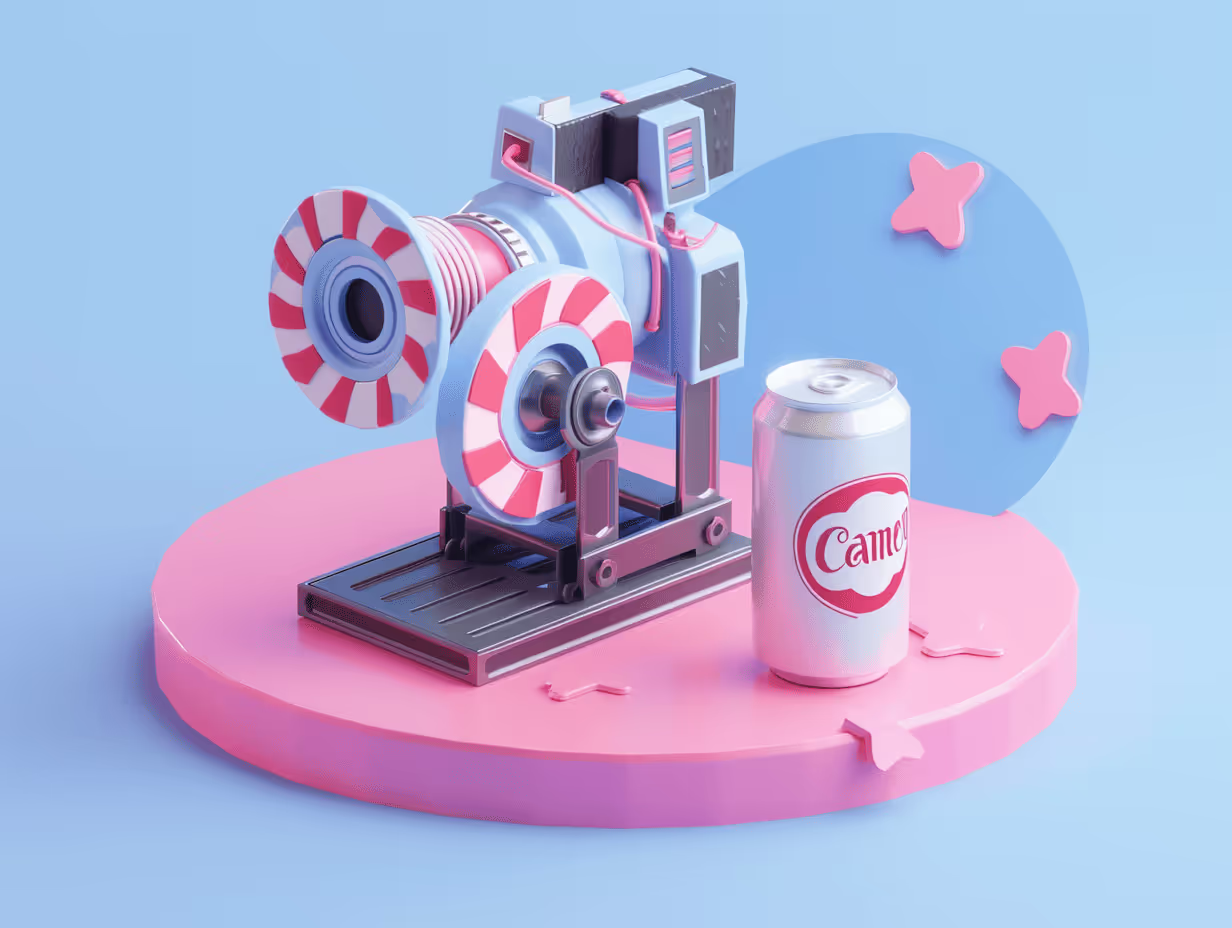What Is Product Placement? Strategy, History, Types & ROI (2025)

From Hollywood blockbusters to viral livestreams, a subtle marketing force drives brand influence behind the scenes. This guide explores how modern entertainment channels blur the lines between storytelling and strategic promotion—unpacking the rise, evolution, and impact of a multi-billion-dollar practice known as product placement.
What is Product Placement?
Product placement, also known as embedded marketing or branded content integration, is a strategic marketing technique where brands intentionally integrate their products or services into non-advertising content, such as movies, television shows, video games, music videos, or social media posts.
Unlike traditional advertisements, product placement aims to subtly influence the audience by naturally weaving the brand into the narrative, making it feel less intrusive. The primary objective is to generate economic profit for the brand through increased visibility and consumer engagement.
History
The concept of product placement dates back to the 19th century. Early examples include mentions of transport and shipping companies in Jules Verne's 1873 novel, "Around the World in Eighty Days", and the appearance of Bass beer bottles in Édouard Manet's 1881–1882 painting, "A Bar at the Folies-Bergère". The Lumière brothers' films in 1896, featuring Sunlight soap, may represent the first paid product placement in cinema.
By the early 20th century, trade journals like "Harrison's Reports" noted and often condemned the practice, citing instances like Red Crown gasoline in "The Garage" (1920) and Corona typewriters in the mid-1920s.
Product placement gained significant momentum in the 1980s. A pivotal moment was the 1982 blockbuster "E.T. the Extra-Terrestrial". When M&M's declined an offer to be featured, Hershey's Reese's Pieces were used instead, leading to a substantial increase in sales and demonstrating the marketing power of cinematic integration. This success led brands to actively seek out film producers, often providing products or financial contributions that helped reduce production costs.
By the 1990s, specialized agencies emerged to manage product placements. In the 2000s, brand integration became more sophisticated, with brands becoming an integral part of movie scripts and sometimes sharing production costs. Today, product placement is a rapidly growing $23 billion industry, with social media platforms developing dedicated features for it.
Types of Product Placement

Product placements can be broadly classified based on their integration method, each designed to achieve a unique effect on the viewer. While some placements are unpaid, involving the loan or gift of a product to reduce production costs, the majority are compensated.
Classic or Screen Placement
In classic or screen placements, the product is visually integrated into the content, appearing prominently within a scene or being used by a character, but without explicit verbal mention. An example is a character drinking from a Coca-Cola can without naming the brand. This method subtly associates the brand with the character or setting.
Verbal or Script Placement
In this method, the product or brand is mentioned directly within the dialogue of the content. This integrates the product into the narrative through conversation, making the mention more overt and memorable. Marty McFly asking for a Pepsi in "Back to the Future" is an example.
Plot Integration or Placement
In plot integrations, the product or brand becomes essential to the storyline, often playing a key role in the narrative's development. This is the most immersive and overt technique, enhancing the audience's emotional investment in the story and improving recall. The use of Reese's Pieces to interact with E.T. is a classic example.
Brand Integration
This is an advanced form where the product or company name is so deeply woven into the show's narrative that it contributes to the storyline and fosters brand awareness beyond a simple appearance. A character's job at a specific company, for instance, could be part of their character development.
Digital and Virtual Placement
Modern technology allows for Virtual Product Placement (VPP), where brands or products are digitally inserted into finished content, even after filming. This enables dynamic placement changes for different markets or updated versions in reruns.
- Augmented Reality (AR) Integration: AR allows for interactive experiences, such as virtual products appearing on a viewer's coffee table through a camera, creating personalized shopping experiences.
- Livestreaming Placement: Brands can integrate products directly into a creator's set or overlay them in real-time during live streams on platforms like Twitch.
Cross-Promotion
Large, vertically integrated companies may feature their own products within their media content as a form of corporate synergy, such as Sony Pictures films featuring Sony electronics.
Benefits of Product Placement
Product placement offers several compelling advantages for brands looking to connect with consumers.
1. Increased Brand Awareness and Visibility
Product placement is a popular and effective way to promote products, providing a significant alternative to traditional advertising. Products are seen by a large audience over many years as content circulates across various platforms. Viewers often perceive the product as a natural part of the story, rather than an explicit advertisement, leading to more subtle and effective exposure.
2. Enhanced Audience Loyalty and Engagement
By integrating products into content that audiences actively seek out and enjoy, product placement can foster brand loyalty. Viewers, especially those highly absorbed in the content, are more attentive, which increases the likelihood of noticing the product.
This subtle integration also builds authenticity and trust, as consumers perceive the placements as organic rather than a sales pitch. This trust can directly influence purchase decisions, as consumers are more likely to buy from brands they trust.
3. Higher Recall and Positive Association
Well-executed product placements tend to result in higher brand recall compared to standard TV ads. When a product is used by a popular or aspirational character, it can significantly enhance the brand's image, as fans may associate the product with desirable traits of their favorite stars. This creates positive brand associations and elevates brand prestige.
4. Circumvention of Advertising Regulations and Ad Fatigue
Product placement can bypass certain advertising laws, allowing for the promotion of products like alcohol or cigarettes that face stricter regulations in traditional advertising. Furthermore, because it blends seamlessly into the narrative, it helps brands avoid "ad fatigue" and is less likely to be skipped by consumers.
5. Cost-Effectiveness and Flexible Reach
While featuring products in major cinema productions can be costly, product placement, especially through social media influencers, offers a more flexible and cost-effective alternative for many brands. Costs can vary significantly, from free (through affiliate links) to thousands or even millions for high-profile placements.
6. Effective Audience Targeting
By carefully selecting the content or influencer, brands can ensure their products reach a highly relevant and engaged target audience. Unlike skippable traditional ads, product placements guarantee that the product is seen by the audience.
7. Longer Shelf Life and Replay Value
In media like video games, products can benefit from a longer shelf life and higher exposure due to the interactive nature and replayability, which can lead to increased brand familiarity.
Risks and Drawbacks
Despite its numerous benefits, product placement carries several risks and challenges that require careful management.
1. Transparency and Sublication
Marketers must balance the need for clear labeling as advertising with the desire for subtlety, as overt promotion can undermine persuasiveness. Many viewers are not informed if a placement is paid, and even blatant integrations may lack explicit warnings.
2. Lack of Control and Unpredictability
Brands often have limited control over the final presentation of their products in content, as scenes can be edited, logos moved, or storylines rewritten without approval. Public reactions can be unpredictable and negative, as demonstrated by the drop in Peloton's stock after a character's heart attack while using the product in a TV show. Even accidental inclusions, like a coffee cup in "Game of Thrones," can lead to unintended negative publicity.
3. Limited Appeal and Competition
Products might not be noticed unless prominently featured, and the format often limits detailed information about product features. With many brands employing product placement, it can be challenging to stand out, and the presence of competing brands within the same content can confuse the audience.
4. High Costs
Securing prominent placement in A-list content can be extremely expensive, potentially consuming a significant portion of a marketing budget. Even digital or virtual placements can be costly without guaranteed success.
5. Potential for Negative Viewer Reaction
If placements are perceived as too obvious, repetitive, or inappropriate, they can generate negative attitudes toward both the placement and the brand itself. This negative reaction is particularly likely when viewers feel manipulated or when the placement disrupts their immersion in the content. Viewers who are highly engaged with the content are more sensitive to such interruptions.
6. Brand Spillover Effect
A brand's image can suffer if it is inadvertently associated with negative characters or storylines, even if another brand in the same content is linked to positive ones.
In interactive media like video games, repeated exposure to product placements can lead to "wear-out effects," diminishing their impact, especially in games played frequently. Emotions experienced during gameplay, such as frustration or anger, can also contribute to negative perceptions of intrusive placements.
Effectiveness and Measurement
The impact of product placement is assessed through both explicit effects, such as improved brand recall, and implicit effects, which involve subconscious changes in behavior like increased purchase intention. Implicit effects are particularly valued as they are more directly linked to purchasing decisions.
Key Metrics:
- Brand Recall: Measures the percentage of consumers who remember a brand after exposure to its placement.
- Brand Recognition: Quantifies the percentage of consumers who correctly identify a brand.
- Purchase Intent: Assesses the likelihood of consumers buying a product after exposure.
- Search Volume Spikes: Identifies increases in online searches for the brand or website visits post-placement.
Trackable Sales: Attributes orders directly to product placement campaigns using tools like UTM links or discount codes.
Factors Influencing Effectiveness:
- Prominence vs. Subtlety: While prominent placements can boost brand memory, subtlety often enhances persuasion, as viewers are more receptive when fully immersed in the story. The more naturally a product is integrated, the more effective it tends to be.
- Plot Connection and Congruence: When a product placement aligns well with the content's narrative, it positively impacts implicit effectiveness, such as consumer attitudes and purchase intentions. Placements that are integrated into the plot generally lead to better recall.
- Character Attractiveness: Brands associated with attractive or admired characters tend to garner more positive sentiment.
- Level of Viewer Involvement: Higher engagement with the program makes viewers more likely to notice and respond to product placements.
- Modality (Audio vs. Visual): Audiovisual product placements are generally the most effective in terms of recall, followed by audio-only, and then visual-only, though this can vary by specific task.
Return on Investment (ROI)
Product placement has demonstrated a track record of generating substantial positive ROI. A YouGov whitepaper indicated that "standout" placements achieved an average Net Placement Value (NPV) of $412,400, surpassing "standard" placements at $299,803, suggesting a higher ROI for standout placements in individual instances. However, when scaled, standard placements can collectively achieve a higher overall valuation.
Modern Trends and Future Outlook

The landscape of product placement is dynamic and rapidly evolving, driven by technological advancements and shifts in consumer behavior.
AI-Powered Product Placement
Artificial intelligence is revolutionizing the field by enabling the analysis of vast datasets to identify optimal placement opportunities, predict consumer responses, and refine brand integrations. AI can help pinpoint the most suitable influencers, content, and distribution channels for targeted audiences.
Growing Influence of Social Media
Social media influencers are becoming increasingly critical for product placement, as consumers frequently rely on them for product recommendations. Brands are strategically partnering with influencers whose values align with their own and their target demographic. Examples include ASOS collaborating with fashion influencers who tag the brand in their posts, and Dyson partnering with beauty influencers to demonstrate products like the Dyson Airwrap through tutorial videos.
Augmented Reality (AR) and Virtual Reality (VR)
These immersive technologies are emerging as new frontiers for product placement, offering interactive and engaging experiences that simulate real-world product interactions. AR can, for instance, allow customers to virtually "try on" clothing, while VR can provide immersive travel experiences to showcase destinations. Snapchat reports significant user engagement with branded AR lenses.
Data-Driven Personalized Placements
The future is moving toward personalized product placement, where AI dynamically swaps advertisements based on individual viewer profiles or viewing contexts. Virtual product placement tools can insert brand elements, such as billboards or apparel, into finished footage without the need for reshooting.
Emerging Platforms
Beyond traditional media, new channels are becoming viable for product placement, including podcasts, video games, and voice assistants. In-game advertising and product placement in video games, for example, have seen a notable increase, with advertisers spending significant amounts depending on the level of interactivity and visibility.
Examples of Product Placement
Product placement has been widely adopted across diverse media formats, from classic films to contemporary digital content, demonstrating its versatility and impact.
- Aston Martin and James Bond: A long-standing association in James Bond films, cementing the brand's image of luxury and sophistication.
- Zillow: The real estate website is integrated through verbal mentions in shows such as "Grace and Frankie" and "Never Have I Ever".
- Lady Gaga's "Telephone": Received criticism for featuring nine brands in nine minutes, many of which were paid product placements.
- Monster Energy in "Death Stranding": While some found it disruptive, many players felt it fit thematically and enhanced gameplay by providing interactive stat boosts.
The future of product placement remains dynamic, continually adapting to new media and technologies, and requiring brands to stay abreast of evolving trends and ethical considerations.
Maximize Product Placement Effectiveness with A/B Testing Tools
Effective product placement brings organic attention and qualified traffic to your brand’s website. Once visitors arrive, tools like Mida empower you to optimize their journey.
Mida is a no-code A/B testing platform built for lean marketing teams. It enables fast AI-powered experimentation, delivers quick-loading variants, integrates with GA4, and works seamlessly across Shopify, WordPress, and Webflow to optimize user journeys and drive conversions.
Maximize ROI from product placement—test and optimize your site today with Mida for measurable growth.







.svg)
